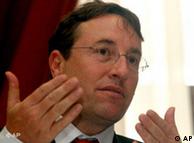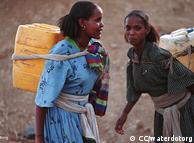Search Results for Tag: Durban
Breakdown: tackling climate change

Restrictions on driving and industry have helped to reduce emissions in Mexico City.
A lot of experts and analysts in the field of climate change say 2012 is a key year in the battle against global warming. Coming off the heels of Durban, many believe this will be the year to prove that the world is ready to take the next step forward – especially with significant parts of the Kyoto Protocol set to expire by the end of the year.
But to move forward, it’s important to know exactly where we stand! National Public Radio (NPR) in the United States recently featured a great breakdown on what the world’s political powers – and some of the biggest polluters – are doing to fight climate change in their respective countries. According to the article, the many of the biggest greenhouse gas emitters have already set goals on a national level to slash harmful emissions. Because there has been little progress on the international level, they have decided to move forward at home.
Those national goals include things like putting a stop to deforestation, investing more in clean, renewable energy sources and working with cap-and-trade policies to curb emissions. If you live in one of the listed countries, take a look at what your government is doing to fight climate change…and if not, let us know!
Women Most at Risk from Climate Disasters
Women, particularly those living in mountain regions in developing countries, are facing disproportionately high risks to their livelihoods and health from climate change. That is the result from a new report entiteled “Women at the Frontline of Climate Change: Gender Risks and Hopes.“ The report has been released at the UN Climate Change Conference (COP17) in Durban by the United Nations Environment Programme (UNEP).
Investing in low carbon, resource efficient green technologies, water harvesting and fuel wood alternatives can strengthen climate change adaptation and improve women’s livelihoods, says the report. In parts of Asia and Africa, where the majority of the agricultural workforce are female, the impacts of such disasters have a major impact on women’s income, food security and health.

Achim Steiner, United Nations Environment Programme (UNEP)
“Women often play a stronger role than men in the management of ecosystem services and food security. Hence, sustainable adaptation must focus on gender and the role of women if it is to become successful”, said UN Under-Secretary General and UNEP Executive Director, Achim Steiner. “Women’s voices, responsibilities and knowledge on the environment and the challenges they face will need to be made a central part of Governments’ adaptive responses to a rapidly changing climate.” According to the report, women in communities vulnerable to climate change are often more likely than men to lose their lives during natural disasters, due to poor access to coping strategies such as basic lifesaving skills or cultural factors that restrict the mobility of women.
More on that issue on ideasforacoolerworld.org/en
At mid-point in Durban

The COP17 climate conference in Durban is at mid-point and the prospects for success are not looking very bright. Since this weekend the political leaders have started to arrive to confront some of the problematic issues. There will probably be some compromises being worked out but fears remain that this won’t be enough to tackle the worsening climate situation.
The hottest topic of course is the future of the Kyoto Protocol. Though the developing countries have been fighting for the protocol’s survival it seems that some of the rich nations want, to say the least, some adjustments. Critics say, that they want to get rid of it. In last week’s talks, the European Union came up with some ideas to keep Kyoto alive, through a decision or a declaration. But for this, the EU wants to extract a huge concession, that all “major economies” agree to start negotiating for a new legally binding treaty that will take in effect in 2020. Problem is, that there is no definition of what a “major economy” is. Among developing countries one might think of those with a large population. But on a per-capita basis, they a still developing countries. And that’s the way the developing countries are looking at it. So it is not surprising that developing countries like China, Brazil or India are not interested in taking up talks about this issue. How this story of the Kyoto Protocol is going to end is hard to say. A quick death is unlikely. Especially given the protest this might arouse and the bad name this will give to those who bury it.
The Durban conference is also debating on how to put a new Green Climate Fund into operations. Disputes remain on the fund’s governance. If the is an agreement, it may be Durban biggest but also only visible success. But the are still a couple of more days to go.
Youth and the Future
 It was Young and Future Generations Day at COP17 in Durban on Thursday, and among the many events, talks and side events that took place on that day alone, one message came across very clear and loud: it is time to act, the time for political inactions has run out. If the world doesn’t act now it might be too late.
It was Young and Future Generations Day at COP17 in Durban on Thursday, and among the many events, talks and side events that took place on that day alone, one message came across very clear and loud: it is time to act, the time for political inactions has run out. If the world doesn’t act now it might be too late.
Young people and their future are actually at the center of these talks, because it is their future that’s being talked about. They are the primary stakeholders in the outcome of this conference. So they have the right to demand more of the negotiators, and of the targets they are setting. In a session called “An Intergenerational Inquiry” UNFCCC Executive Secretary Christiana Figueres warned youth not to pick up the bad habits of negotiators and stay ambitious. In response, 16-year old Mokgadi Seemola silenced the room in stating, “Because of some of the wrong decisions some negotiators have made, my dream is shattered.” Drought has devastated her South African community and now she faces the harsh realities of climate change. She had hopes to share the world she grew up in with her children, and that’s now impossible.
One would hope that negotiators at this conference had heard the message: that there is no time to wait any longer on coming to a binding agreement on how to stop climate change. There is not much time left. So, what action will they take?
(Report based on Eco, the NGO newsletter by CAN at the UNFCCC meeting in Durban)
Wind power crucial for fighting climate change
 As the parties are battling over ways to fight climate change in Durban at COP17, the Global Wind Energy Council published a new study on the potential of wind power for significantly reduce CO2 emissions in the energy sector. Since 40% of global CO2 emissions are produced by the power sector it is perfectly clear that we can not win the fight against climate change without a dramatic shift in the way we produce and consume electricity. As science makes clear: global emissions need to peak and begin to decline before 2020. That is a goal only to be reached with a increase of in renewable energy deployments. While building a conventional power plant can take up to ten years, a large wind farm can be put up in a matter of months. And within three to six months of operations, a wind turbine has offset all emissions from its construction, to run virtually carbon free for the remainder of its 20 year lifetime, according to the study.
As the parties are battling over ways to fight climate change in Durban at COP17, the Global Wind Energy Council published a new study on the potential of wind power for significantly reduce CO2 emissions in the energy sector. Since 40% of global CO2 emissions are produced by the power sector it is perfectly clear that we can not win the fight against climate change without a dramatic shift in the way we produce and consume electricity. As science makes clear: global emissions need to peak and begin to decline before 2020. That is a goal only to be reached with a increase of in renewable energy deployments. While building a conventional power plant can take up to ten years, a large wind farm can be put up in a matter of months. And within three to six months of operations, a wind turbine has offset all emissions from its construction, to run virtually carbon free for the remainder of its 20 year lifetime, according to the study.
In the latest publication concerning “Wind Energy and climate policy” introduced here in Durban it says that in terms of the targets already stated by the industrialized countries for the period up to 2020, global wind energy could contribute at least 44% of the total emissions reductions, i.e. 1.5 billion tons of CO2 every year. And although that is nowhere near what the science tells us is required, even for a larger reduction wind power could play a crucial role in achieving that goal.
As Nelson Mandela said: “It always seems impossible, until it is done.”









Feedback